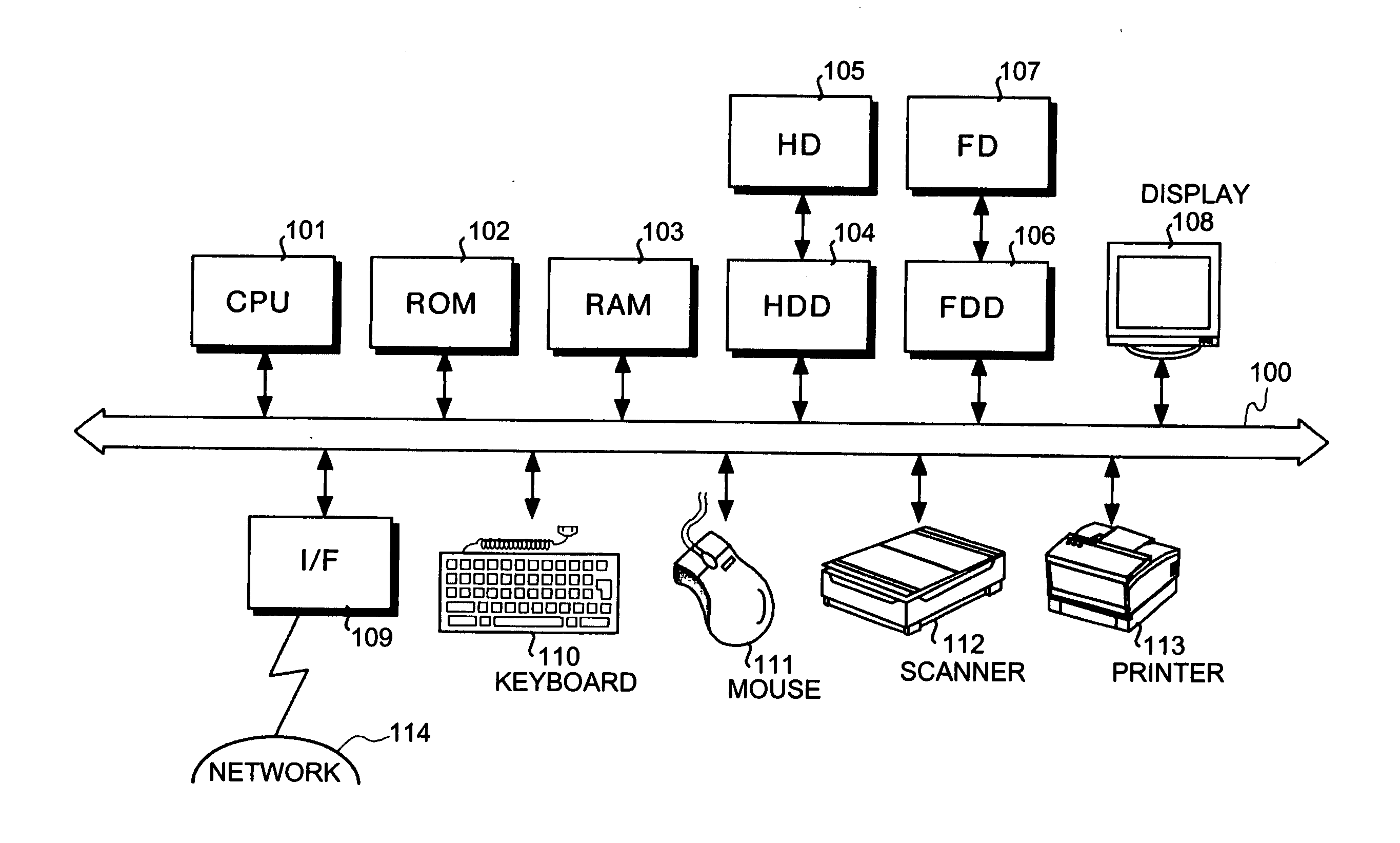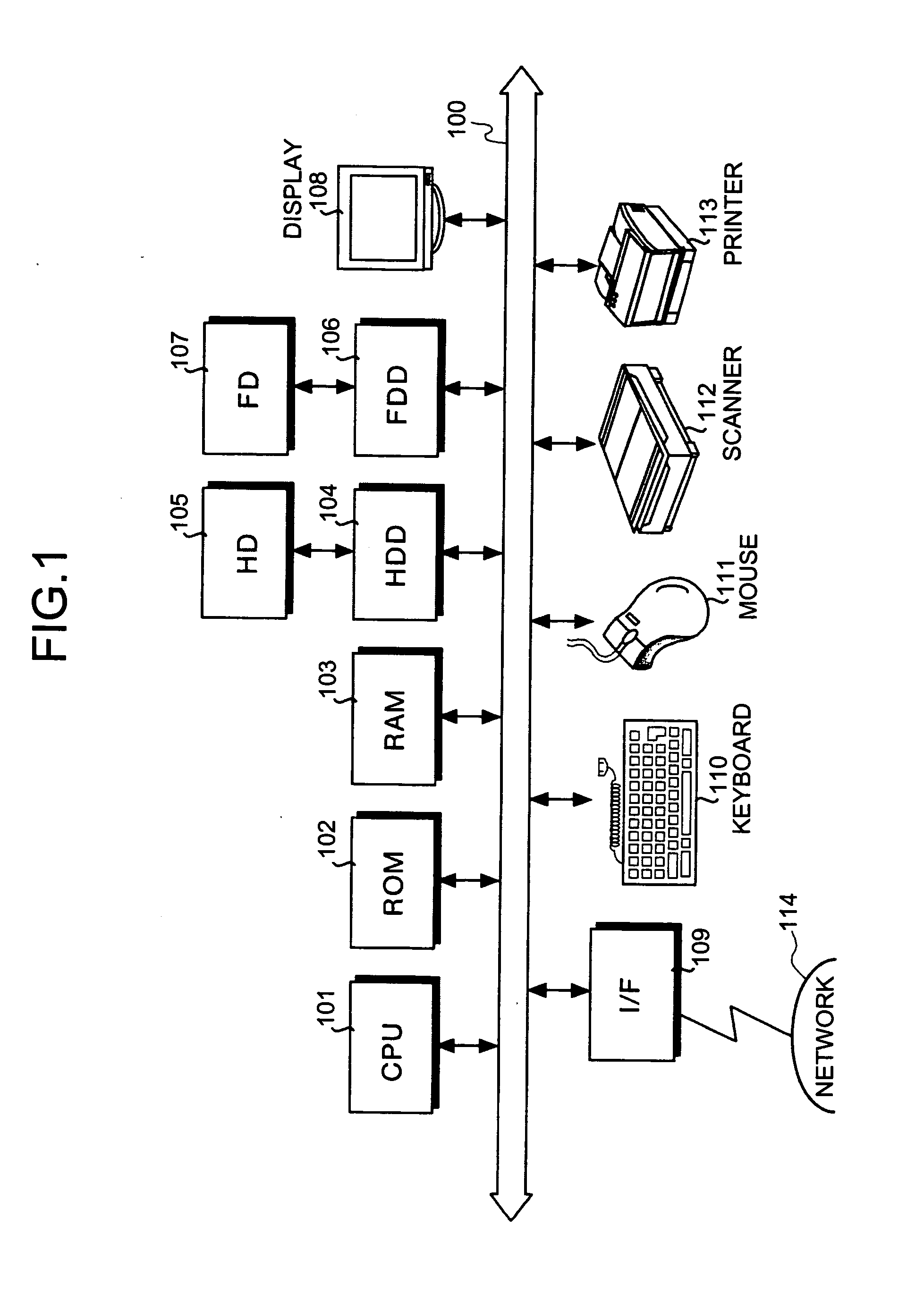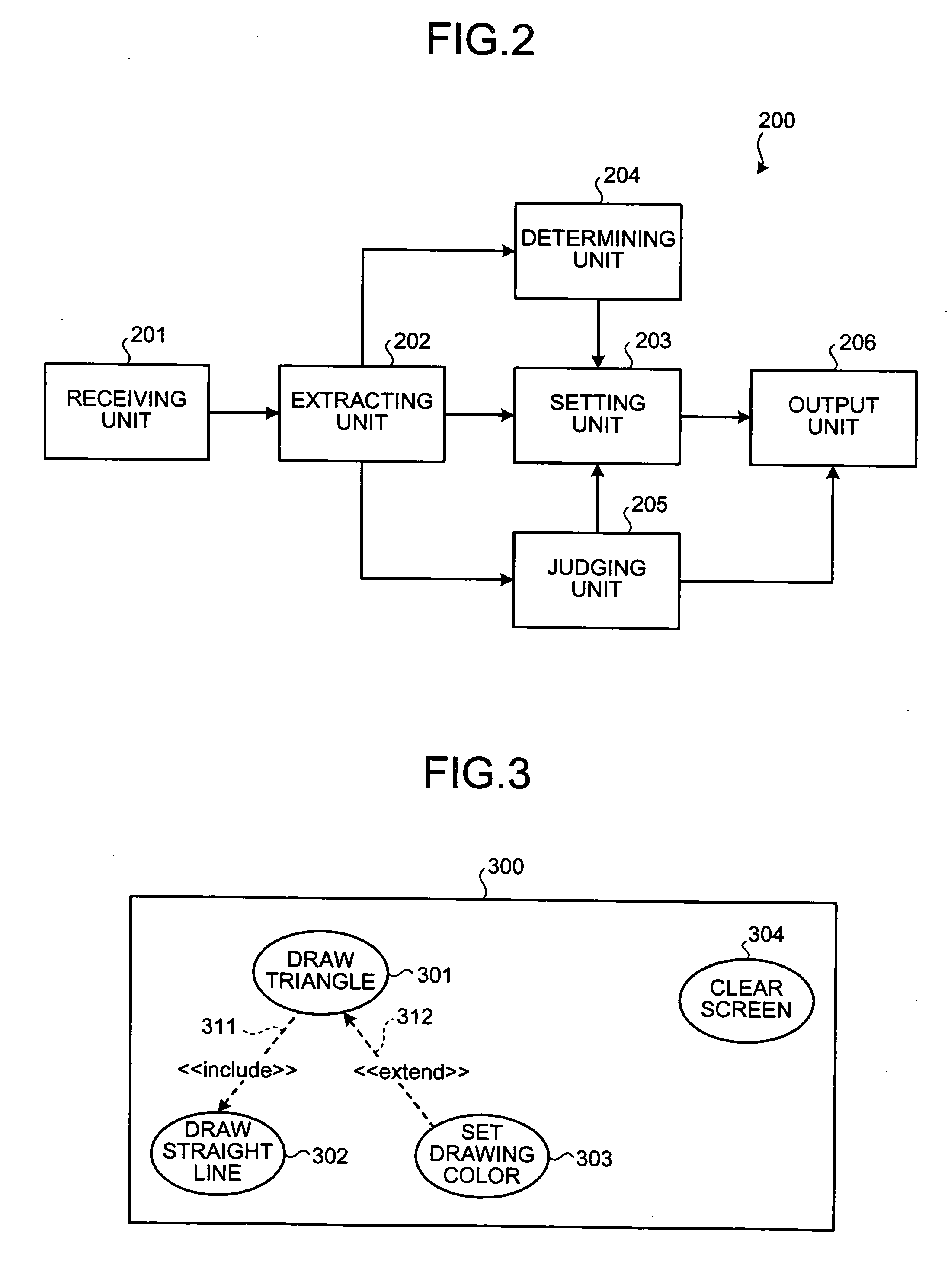Method and apparatus for supporting verification of hardware and software, and computer product
a technology of hardware and software, applied in the field of hardware and software verification, can solve the problems of inability to determine to which of the verification items priority to give, the work that has been achieved in the verification process until the problem is detected becomes useless, and the difficulty in evaluating whether the verification items accurately cover the functions described in the specifications of the subj
- Summary
- Abstract
- Description
- Claims
- Application Information
AI Technical Summary
Benefits of technology
Problems solved by technology
Method used
Image
Examples
sixth embodiment
[0077] As shown in FIG. 15, there is no relation information between the use cases 1501 and 1502. The use cases 1501 and 1502 exist independently from each other. Because it is impossible to determine subordinative relation between such use cases 1501 and 1502, priority of verification items for both use cases 1501 and 1502 is set to an identical value P. In such a case, a different value is not to be set after the priority has been set, as a case explained in the Therefore, if there is another use case or relation information in the use case diagram 1500, the verification items for the use cases 1501 and 1502 are to have the lowest priority among use cases in the use case diagram 1500.
[0078]FIG. 17 is a schematic of a use case diagram according to an eighth embodiment of the present invention. FIG. 18 is a table of a verification item list according to the eighth embodiment. A use case diagram 1700 that includes use cases 1701 to 1703, and relation information 1711 and 1712 is sho...
eighth embodiment
[0101] On the other hand, if all relation information has been extracted (“YES” at step S2509), it is determined whether tacit relation information as described in the eighth embodiment is detected (step S2510). When the tacit relation information is detected (“YES” at step S2510), the process returns to step S2508 to perform the priority setting process based on the tacit relation information. On the other hand, when the tacit relation information is not detected (“NO” at step S2510), a verification item list in which the priority is assigned to the verification items is output (step S2511). Then, a series of processes is finished.
[0102] While in the flowchart described above, when the directed cycle is detected at step S2503 (“YES” at step S2503), the description error information is output at step S2504, the verification items for use cases in the directed cycle may be set to have identical priority instead of outputting the description error information.
[0103] Moreover, while i...
PUM
 Login to View More
Login to View More Abstract
Description
Claims
Application Information
 Login to View More
Login to View More - R&D
- Intellectual Property
- Life Sciences
- Materials
- Tech Scout
- Unparalleled Data Quality
- Higher Quality Content
- 60% Fewer Hallucinations
Browse by: Latest US Patents, China's latest patents, Technical Efficacy Thesaurus, Application Domain, Technology Topic, Popular Technical Reports.
© 2025 PatSnap. All rights reserved.Legal|Privacy policy|Modern Slavery Act Transparency Statement|Sitemap|About US| Contact US: help@patsnap.com



